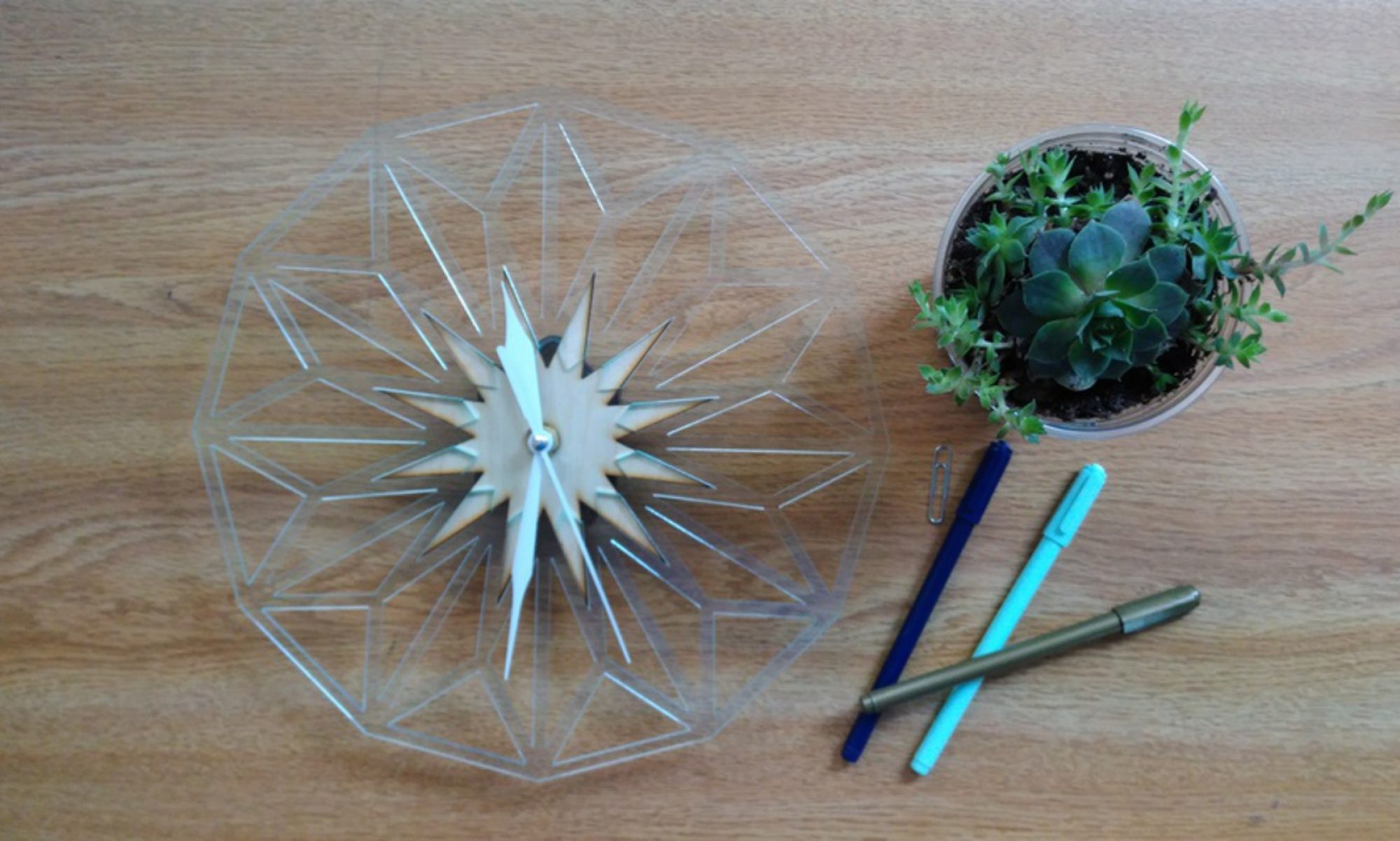OBJECTIVE
Provide a physical item that illustrates your ability to develop a 2D Geometry file, prepare the CAD file in secondary laser application, and utilize laser cutting, engraving and scoring techniques.
CRITERIA
- Prepare a CAD File that utilizes application options, 2D Curve/Polyline geometry, layers & editing tools within Rhinoceros 3D
- Geometry must be prepared for laser cutting, engraving and scoring processes
- Successfully export from Rhino as [.dxf] file-type, and import into LaserCut
- Properly prepare LaserCut file settings/preferences
- Exhibit understanding of Equipment Policy & Procedure
- Participate in Fire Extinguisher Identification and Use Training, provided by Environmental Health & Safety
- Provide documentation of your work (Rhino File, LaserCut File, Images)
SUGGESTED PROJECT
*READ ME* The following is a suggested project. You are NOT required to follow these guidelines. You may create your own original project if you prefer:
Using a Clock Kit, and Acrylic Sheet- utilize Laser Cutting, Engraving and Scoring Techniques to create a functional Clock. This Project should illustrate the User’s ability to properly prepare a CAD File within Rhinoceros 3D for Laser Processing.
TOOLS
SUGGESTED MaTERIALS
- (1) 12″ x 12″ x 1/8″ (305mm x 305mm x 3mm) Acrylic Sheet
- (1) Clock Kit
RESOURCES
- Project Submission Guidlines
- Rhino Introductory Tutorials
- File Prep Instructions (for suggested clock project)
- Rabbit Laser Policy
- Rabbit Laser Procedure
- Rabbit Laser Settings
STEPS
- 1
- 2
- 3
- 4
- 5
- 6
1
Step 1
1. Begin by determining your Tools, Application Environments and Materials :
i. Tools: Rabbit Laser System
a. Power: 80 Watt
b. Bed Size: 1200mm x 900mm (47.25in x 36.43in)
ii. Applications: Rhinoceros 3D, LaserCut
iii. Materials: Available for purchase from IDeATe Lending (A29)
a. Suggested: Acrylic Sheet : 12″ x 12″ x 1/8″ (305mm x 305mm x 3mm)
b. For Suggested Clock Project: 12″ x 12″ x 1/8″ (305mm x 305mm x 3mm) & Clock Kit
